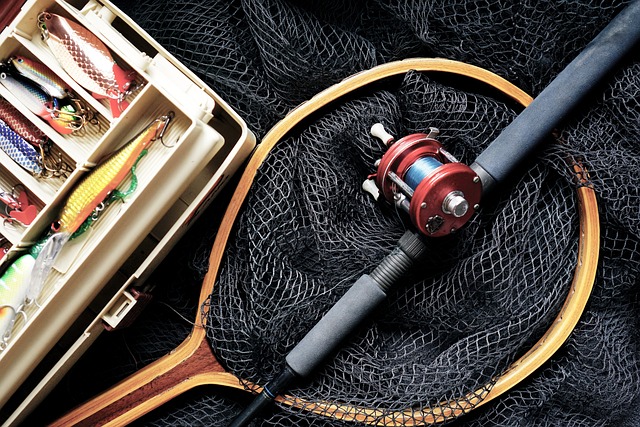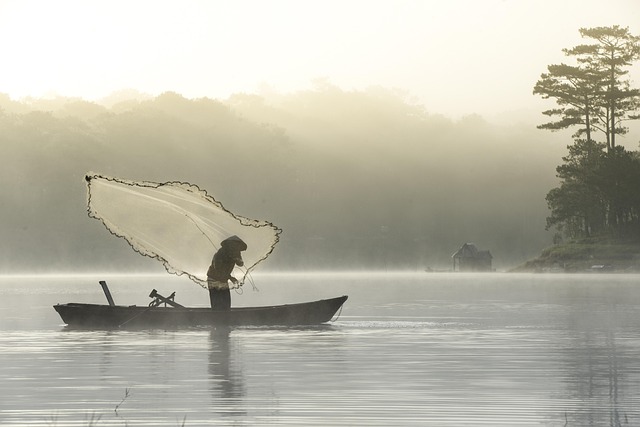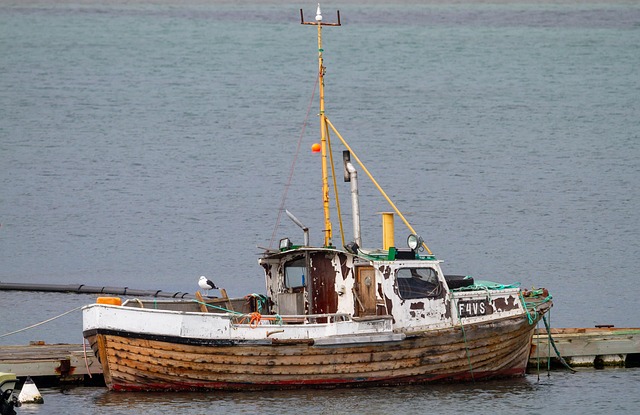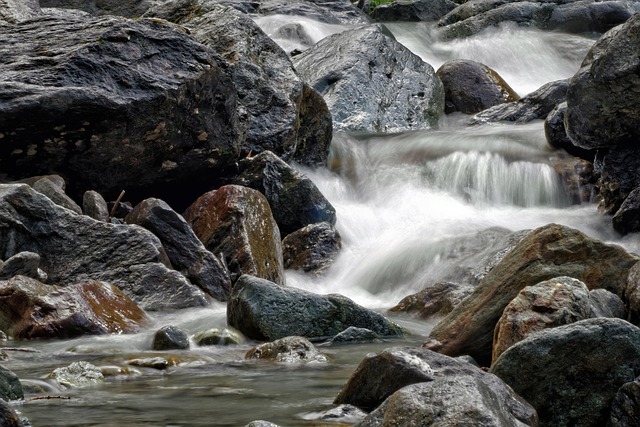The Siuslaw River, with its rich indigenous fishing heritage, faces challenges from unsustainable practices and environmental threats. Conservation efforts focus on preserving traditional techniques like hand-cast nets and catch-and-release, while combating urban development, pollution, and climate change. These strategies ensure the river's ecological balance, maintain cultural identity, and safeguard fish populations for future generations through Siuslaw River fishing conservation.
Explore the rich fishing traditions of the Siuslaw River, a vital waterway with a deep-rooted history. This article delves into the historical perspectives of local fishing communities, unearthing the unique traditional techniques and gear that have defined anglers’ experiences for generations. We examine environmental challenges facing the river and highlight conservation efforts aimed at preserving its ecological balance. Additionally, we explore how sustainable fishing practices safeguard the cultural heritage associated with this iconic Siuslaw River fishing destination.
- Historical Perspectives: Siuslaw River Fishing Communities
- Traditional Techniques and Gear Used by Anglers
- Environmental Challenges and Conservation Efforts
- Preserving Cultural Heritage Through Sustainable Fishing Practices
Historical Perspectives: Siuslaw River Fishing Communities

The Siuslaw River, a vital waterbody in Oregon’s coastal region, has long been home to rich fishing traditions deeply rooted in its history. For centuries, indigenous communities like the Siuslaw and Yaquina Native Americans relied on the river for sustenance, practicing sustainable fishing methods that have shaped their cultural identity. These early fishers developed intricate knowledge of the river’s ecosystem, utilizing traditional techniques such as weir fishing and net casting to catch salmon, steelhead, and other species.
The historical perspective of Siuslaw River fishing communities reveals a deep connection between people and the river. As European settlers arrived in the area, they adopted these indigenous practices, establishing fishing villages and towns along the riverbank. The Siuslaw River became a hub for commercial fishing, with canneries processing vast quantities of fish for local consumption and export. However, over time, unsustainable fishing methods led to significant declines in fish populations, prompting concerns for the future of Siuslaw River fishing conservation. Today, efforts are underway to preserve and restore these precious traditions while ensuring the long-term health of the river’s marine life.
Traditional Techniques and Gear Used by Anglers

Anglers on the Siuslaw River have long embraced traditional techniques that have been passed down through generations, fostering a rich fishing culture. These methods often involve using simple yet effective gear designed to connect anglers with the river’s abundant wildlife. Traditional tackle includes hand-cast nets, which require skill and precision to navigate the river’s currents, and fly fishing rods, favoured for their ability to present lures gently on the water’s surface, mimicking natural insects.
The conservation of these ancient practices is vital to preserving the Siuslaw River’s ecological balance. Anglers also play a crucial role in sustainability by adhering to local regulations, practicing catch-and-release where necessary, and respecting the river’s natural rhythm. This harmonious relationship between tradition and conservation ensures the longevity of fishing as a cherished pastime while safeguarding the health of the Siuslaw River ecosystem.
Environmental Challenges and Conservation Efforts

The Siuslaw River, a vital ecosystem and cultural landmark, has long been a hub for fishing traditions. However, this precious resource faces significant environmental challenges due to factors like urban development, pollution, and climate change. These threats have led to a decline in fish populations and disrupted the delicate balance of the river’s ecosystem.
In response, various conservation efforts are underway to protect and preserve the Siuslaw River for future generations. Local organizations, fishermen, and environmental advocates are collaborating on initiatives aimed at improving water quality, restoring habitats, and promoting sustainable fishing practices. These include stream restoration projects, waste management programs, and educational campaigns to raise awareness about the river’s ecological significance. By combining traditional knowledge with modern conservation strategies, these efforts strive to ensure the longevity of Siuslaw River fishing while safeguarding its unique natural heritage.
Preserving Cultural Heritage Through Sustainable Fishing Practices

The Siuslaw River, a vital cultural and ecological landmark, has long been a source of sustenance and inspiration for the indigenous communities who have called this region home. The rich fishing traditions that have been passed down through generations are not just about providing food; they are deeply intertwined with the spiritual and social fabric of these communities. As such, preserving these ancient practices is crucial for maintaining the cultural heritage of the Siuslaw River valley.
Sustainable fishing, a concept that respects the river’s natural balance, plays a pivotal role in this preservation effort. By adopting methods that minimize impact on the river ecosystem, local fisherman ensure the longevity of the resource for future generations. This includes practices like catch-and-release, protecting sensitive habitats, and adhering to seasonal restrictions, all of which contribute to the health and diversity of fish populations along the Siuslaw River. Through these conservation efforts, the river’s cultural and natural heritage are intertwined, fostering a harmonious relationship that benefits both the people and the environment.






